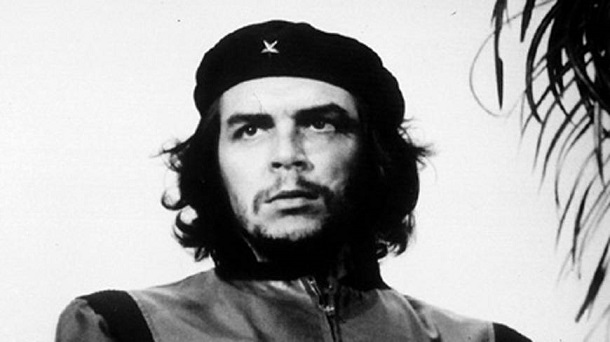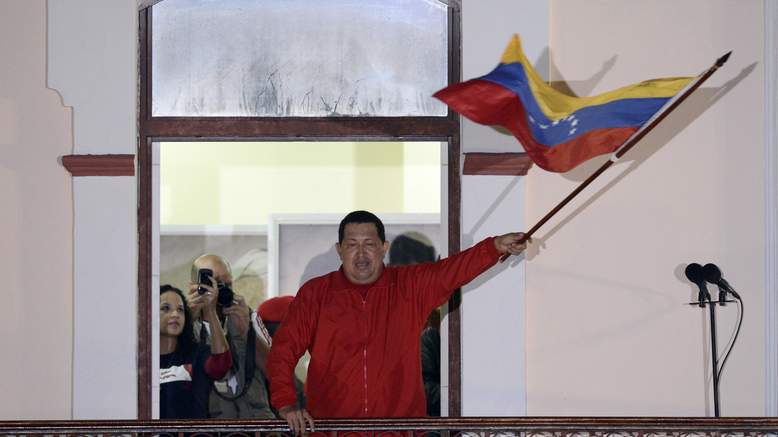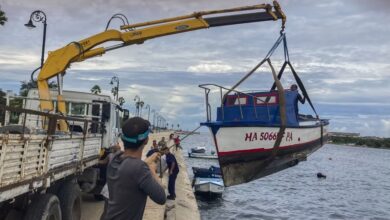40th anniversary of the death of revolutionary icon Legenadary Ernesto ‘Che’ Guevara Monday in Cuba, where he is buried, and Bolivia, where he was killed in 1967.
Acting president Raul Castro led the main event in Cuba under a giant bronze statue of the guerrilla fighter in the town of Santa Clara, some 300 kilometres east of Havana.
Convalescing Cuban leader Fidel Castro, 81, was absent, but a homage he penned was read in public. The Argentine-born doctor-turned-guerrilla was “a flower torn up prematurely by the stem. I bow my head to pay tribute – with respect and gratitude – to the exceptional warrior,” Castro wrote.
Guevara’s Argentine widow Aleida March, 71, attended the event, along with his four children Aleida, Camilo, Celia and Ernesto. Guevara had a daughter with his first wife, a Peruvian revolutionary, both of whom are dead.
Loudspeakers also blared an October 3, 1965 recording of Fidel reading a farewell letter that Guevara wrote as he prepared to join the guerrilla war in the Congo.
Guevara’s youngest son, Ernesto, honoured his father by roaring in on a wine-red motorcycle along with 37 members of Cuba’s Harley-Davidson motorcycle club, all dressed in black and wearing chains around their necks.
The drive-by memorialized Guevara’s ride across Latin America in the early 1950s on his Norton 250, immortalized in the book – and the 2004 movie – “The Motorcycle Diaries.”
Guevara fought a key battle in Santa Clara in 1958 during the Cuban revolution. In 1997 Castro buried Che’s remains in this town after his bones were discovered in Vallegrande, Bolivia, where soldiers executed him 30 years earlier after he was captured trying to spread Marxist revolution to South America.
In Vallegrande, at the main Bolivian event, leftist President Evo Morales told a crowd of 3,000 – including a former guerrilla fighter from Cuba and leftists from six nations – that Che will be remembered “for his political ideology and for giving his life for others.
“This struggle continues, as long as there is capitalism, as long as neo-liberalism does not change,” Morales said. The crowd roared in support.
In Venezuela, the leftist government of President Hugo Chavez honoured Che by unveiling a monument at Pico del Aguila, some 4,000 metres (13,100 feet) above sea level.
“This is a sacred place,” said Culture Minister Francisco Sesto, noting that both Che and 19th century liberator Simon Bolivar visited the site.
Che however is not universally adored – especially in a place like Miami, capital of the rabidly anti-Castro Cuban exile community.
“He is the symbol of anti-Americanism, of violence. I don’t think he should be remembered for anything good,” said Felipe Salinas, a resident of Miami’s Little Havana.
“Like many people,” said Maria Carrera, another exile who left Cuba a decade ago, “I was a Che fanatic. But since I arrived in Miami I don’t defend him any more. Here we receive information, which does not happen in Cuba, about Che ordering many executions.”
Che is a complex person that blends legend and reality, said Uva de Aragon, a Cuban-American academic at Florida International University.
“We’ll still have to wait many years for history to deliver a definite judgement on Che, when the passions of both sides have passed,” she said.
Born in the Argentine city of Rosario, Guevara travelled across Latin America in 1952 and 1953 and was shocked to witness the widespread economic disparity. He became convinced that violence was necessary to overturn the unjust social order in the region.
Guevara met Castro in Mexico in 1955 and quickly joined the uprising against then Cuban dictator Fulgencio Batista. By the time the revolution triumphed in January 1959, Guevara was a key player.
After leaving Cuba and leading a group of Cuban revolutionaries fighting with Marxist guerrillas in the Congo, Guevara travelled to Bolivia, arriving in late 1966.
He led a small clutch of rebels for 11 months trying to spread revolution, but found little support.
The Bolivian army and two Cuban-American US Central Intelligence Agency agents captured an ill Guevara in the village of La Higuera, and executed him on October 9, 1967. He was 39.
[adrotate group=”10″]




